The mysterious team that dominated Solana for three months is about to launch a token on Jupiter?
With no marketing and no reliance on VC, how did HumidiFi win the Solana on-chain proprietary market maker war in just 90 days?
A team with no official website, no community, and anonymous members managed to capture nearly half of the trading volume on Jupiter within just 90 days.
To gain a deeper understanding of this mysterious project, we must first explore the silent on-chain trading revolution currently unfolding on Solana.
HumidiFi accounts for 42% of the total trading volume processed on Jupiter
Source: Dune, @ilemi
How Prop AMMs Are Reshaping On-Chain Trading
In the context of AMMs, toxic order flow refers to high-frequency arbitrageurs leveraging low-latency connections and advanced algorithms to quickly capture price discrepancies and rapidly flatten the spread between on-chain prices and those on price discovery venues (typically centralized exchanges like Binance). The profits taken by these toxic flows ultimately come at the expense of traders, liquidity providers, and on-chain market makers.
In traditional financial markets using centralized limit order books (CLOBs), professional market makers can counter toxic order flow in various ways (such as adjusting spreads or pausing quotes). By analyzing order flow patterns, they can identify informed traders and adjust their quotes accordingly, reducing losses from "adverse selection." As a result, market makers operating on Solana naturally gravitated toward CLOB-based DEXs like Phoenix. However, during the Solana "meme frenzy" from 2024 to early 2025, the network was overwhelmed by unprecedented demand. Market makers often failed to submit orders on-chain, and updating quotes consumed a large amount of expensive compute units, causing their costs to soar.
A series of thorny practical issues are forcing some of the most experienced AMM market makers to fundamentally rethink how on-chain markets operate, giving rise to a revolutionary new market structure.
This new paradigm is known as "Prop AMM" (Proprietary Automated Market Maker), aiming to provide tighter, more efficient liquidity on-chain while minimizing the risk of being exploited by high-frequency arbitrageurs.
SolFi, ZeroFi, and Obric were the original "big three" of Prop AMMs. They do not publicly expose contract interfaces, but instead provide them directly to major trading routers like Jupiter, requiring Jupiter to route orders into their AMMs. This design makes it extremely difficult for external professional arbitrageurs like Wintermute to interact natively with the contracts, as they cannot understand or predict the trading logic. This prevents market makers' quotes from being replaced and avoids the "adverse selection" problem posed by informed traders.
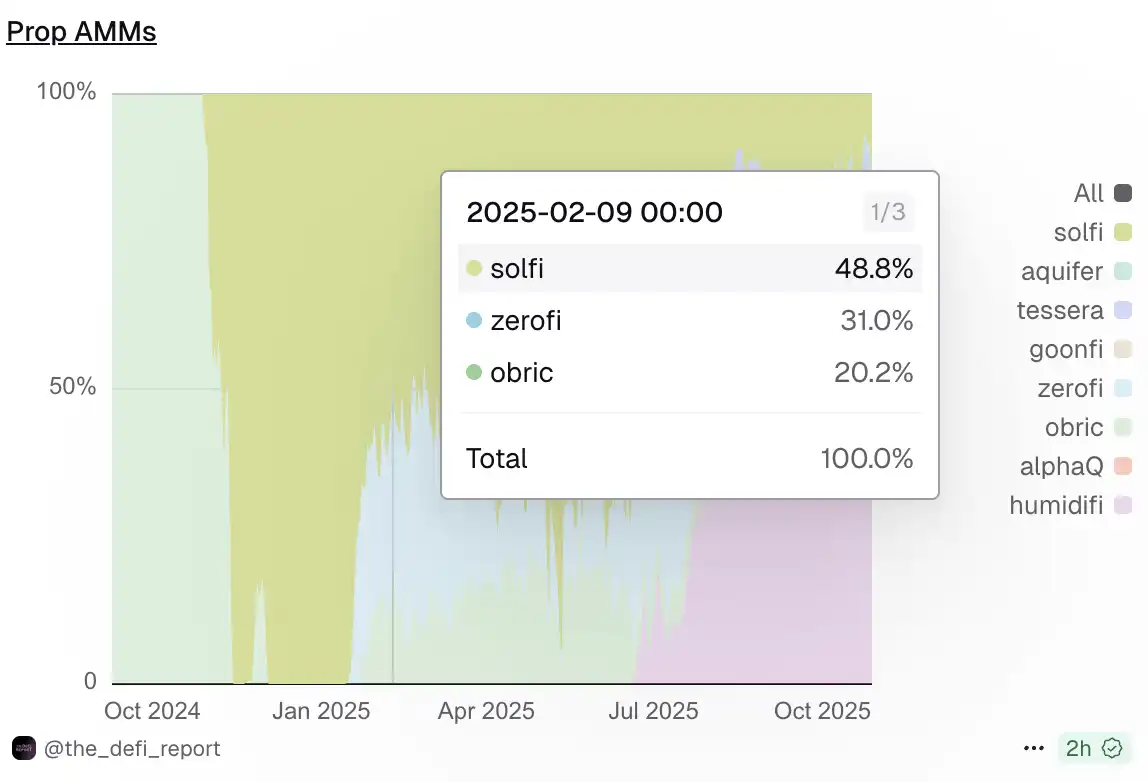
In February 2025, SolFi, ZeroFi, and Obric were the main three Prop AMMs
Source: Dune @the_defi_report
HumidiFi's Blitzkrieg
By July 2025, competition among Prop AMMs had reached a fever pitch, and a project called HumidiFi rewrote the entire market landscape at a breathtaking pace.
HumidiFi officially launched in mid-June 2025, and just two months later, it had captured 47.1% of all Prop AMM trading volume, becoming the undisputed market leader. In contrast, former leader SolFi saw its market share plummet from 61.8% two months prior to just 9.2%.
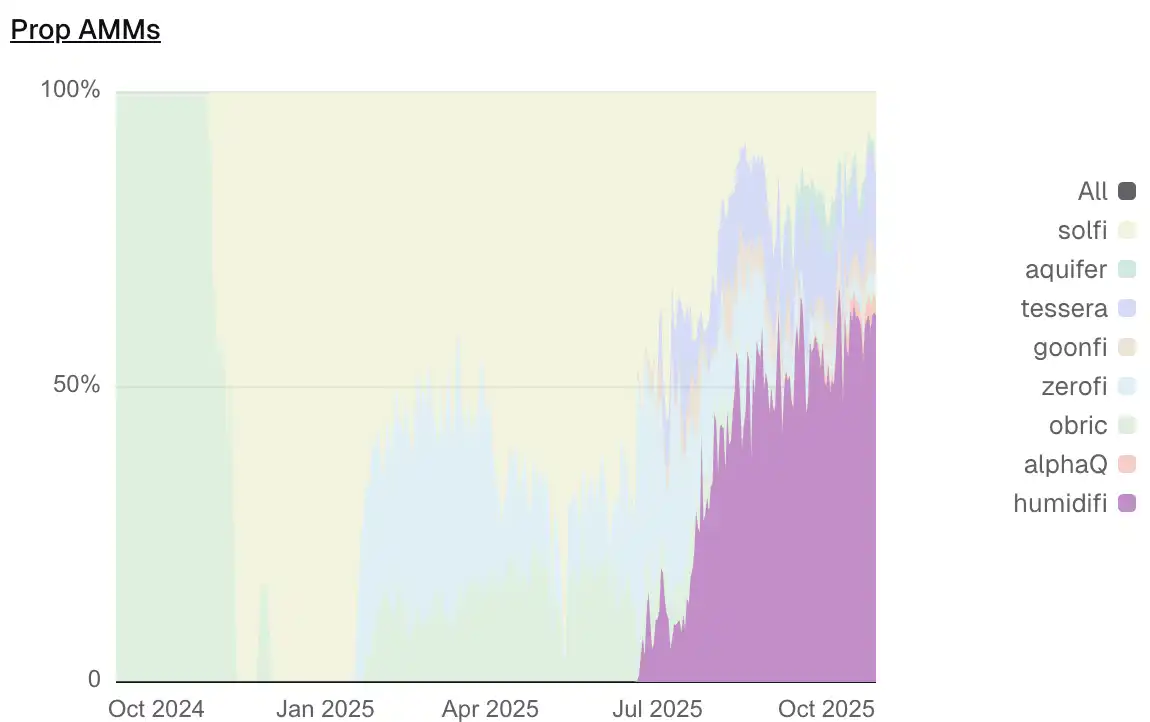
Source: Dune @the_defi_report
HumidiFi's dominance is especially pronounced in the SOL/USDC trading pair. On October 28, HumidiFi processed $1.08 billions in SOL/USDC trades in a single day, accounting for 64.3% of the pair's total daily volume.
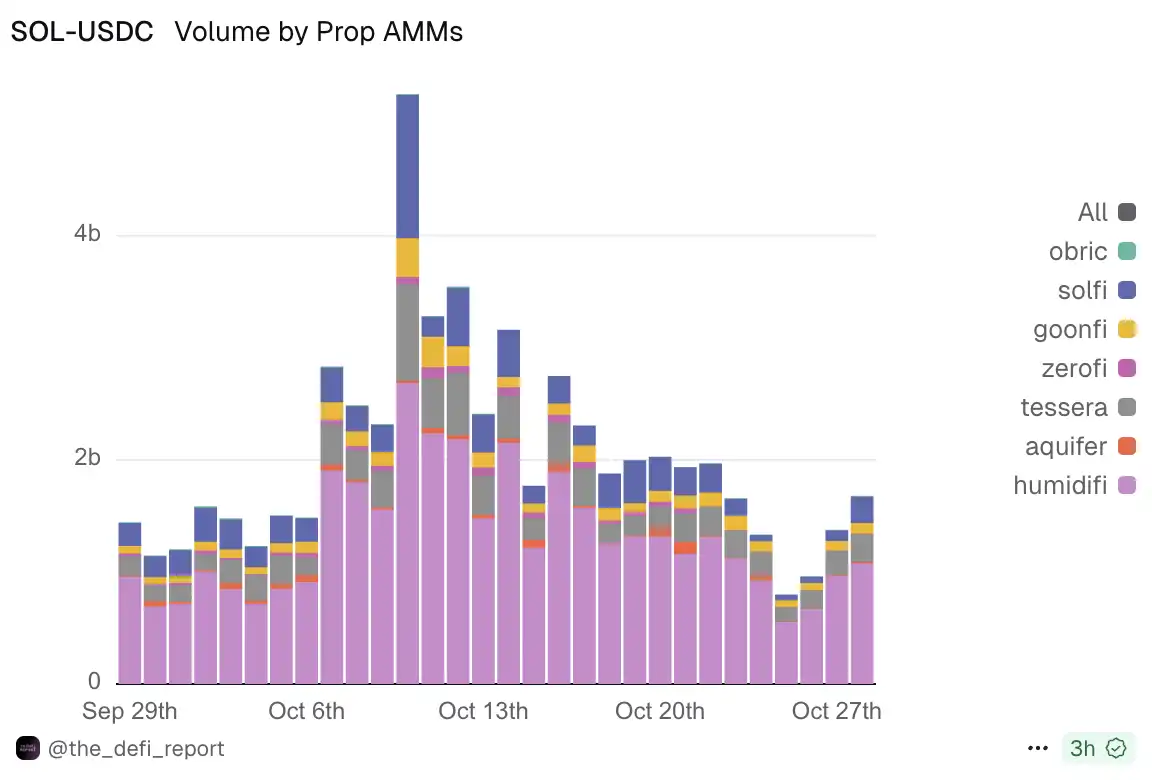
Source: Dune @the_defi_report
HumidiFi also boasts a high penetration rate in Jupiter's routing. As an aggregator with 86.4% market share on Solana, Jupiter's routing choices largely determine traders' actual experience. Data from October 20 shows HumidiFi held a 46.8% market share on Jupiter, more than four times that of second-place TesseraV (10.7%).
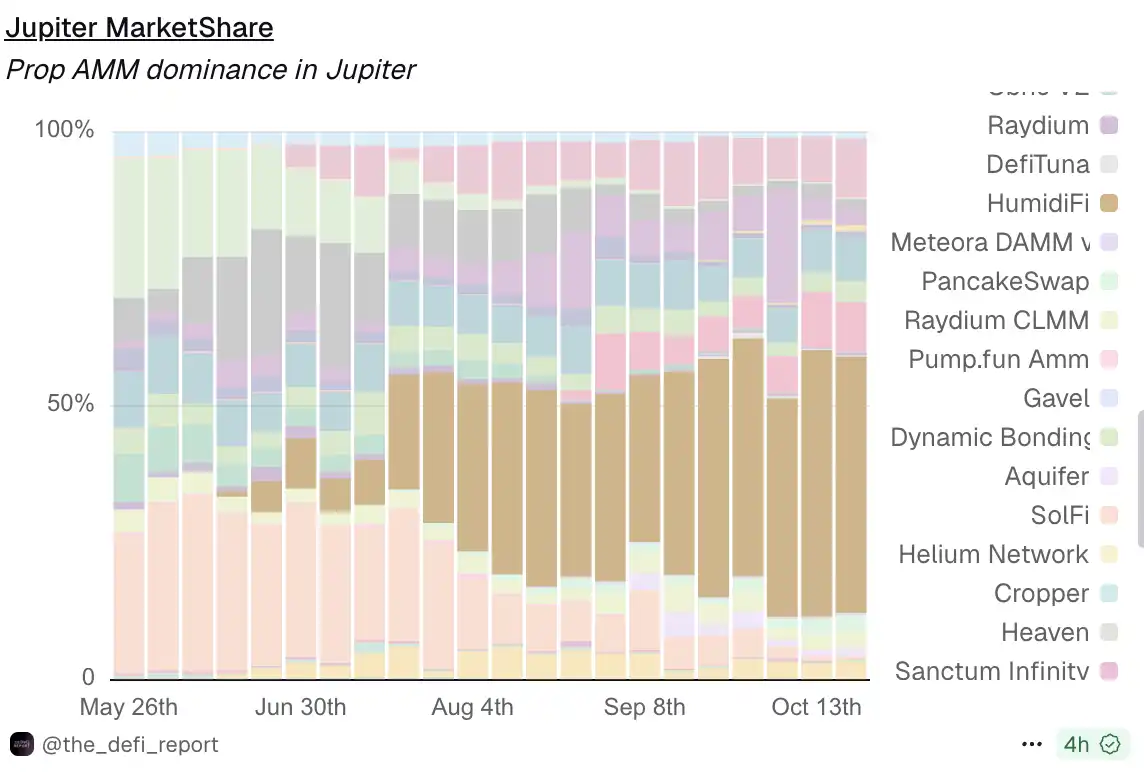
Source: Dune @the_defi_report
Expanding the view to the entire Prop AMM ecosystem, HumidiFi's dominance remains solid. On October 28, total Prop AMM trading volume reached $2.18 billions, with HumidiFi alone accounting for $1.35 billions, a staggering 61.9% share. This figure not only far exceeds second-place SolFi's $309 millions, but even surpasses the combined volume of all competitors ranked 2-8.

Source: Dune @the_defi_report
HumidiFi's victory was achieved almost entirely "under the radar." It had no official website, no early Twitter account, and no public information about its team members.
HumidiFi needs no marketing, no airdrops, no storytelling. It simply offers better spreads and better execution prices on every trade than its competitors. As Jupiter's routing algorithm repeatedly chose HumidiFi, the market cast its vote in its own way.
The Ultimate Race of Speed and Cost
The key to HumidiFi's success lies in its extreme compression of oracle update compute costs, and its clever use of the Jito auction mechanism to convert this technical edge into absolute market dominance.
First, HumidiFi consumes very little compute resources. According to data from @bqbrady, each oracle update by HumidiFi uses only 799 CUs (compute units). In comparison, its main competitor SolFi requires 4,339 CUs. TesseraV, operated by top market maker Wintermute, also needs 1,595 CUs—twice that of HumidiFi.

Source: X, @bqbrady
HumidiFi also fully leverages its low CU consumption to gain absolute transaction priority in Solana's MEV infrastructure, Jito auctions. In Jito auctions, transaction priority is determined not by absolute tips, but by tip per compute unit (Tip per CU). HumidiFi pays about 4,998 lamports in tips for each oracle update. Due to its extremely low CU usage (799 CUs), its Tip per CU ratio reaches an astonishing 6.25 lamports/CU.

According to data from Brennan Watt, an engineer at Solana core developer Anza, HumidiFi uses six times fewer CUs than former Prop AMM leader SolFi, while paying over eight times more in tips.
Another key advantage for HumidiFi is its oracle update frequency. HumidiFi updates its oracle 17 times per second, far surpassing its main competitors (SolFi at 13 times, TesseraV at 11 times, and ZeroFi at 10 times).
In the highly volatile crypto market, this near real-time price tracking allows HumidiFi to always stay close to fair value, leaving little room for arbitrageurs, and providing tighter liquidity without needing to widen spreads for self-protection.
In addition, HumidiFi excels at cost control. Its daily operating cost is only $2,247. In comparison, SolFi, despite managing five times more assets (AUM: $8 billions vs $1.6 billions), has a daily cost only 20% lower ($1,785).
WET Token Launches on Jupiter DTF
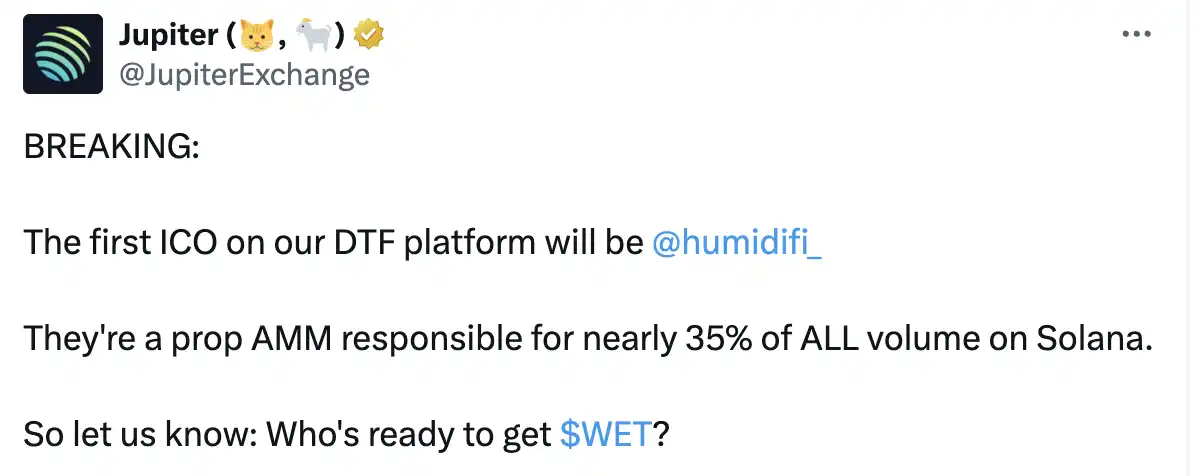
During the community call on the evening of October 30, the Jupiter team announced the first project to launch on their DTF platform: HumidiFi, with the token symbol WET.
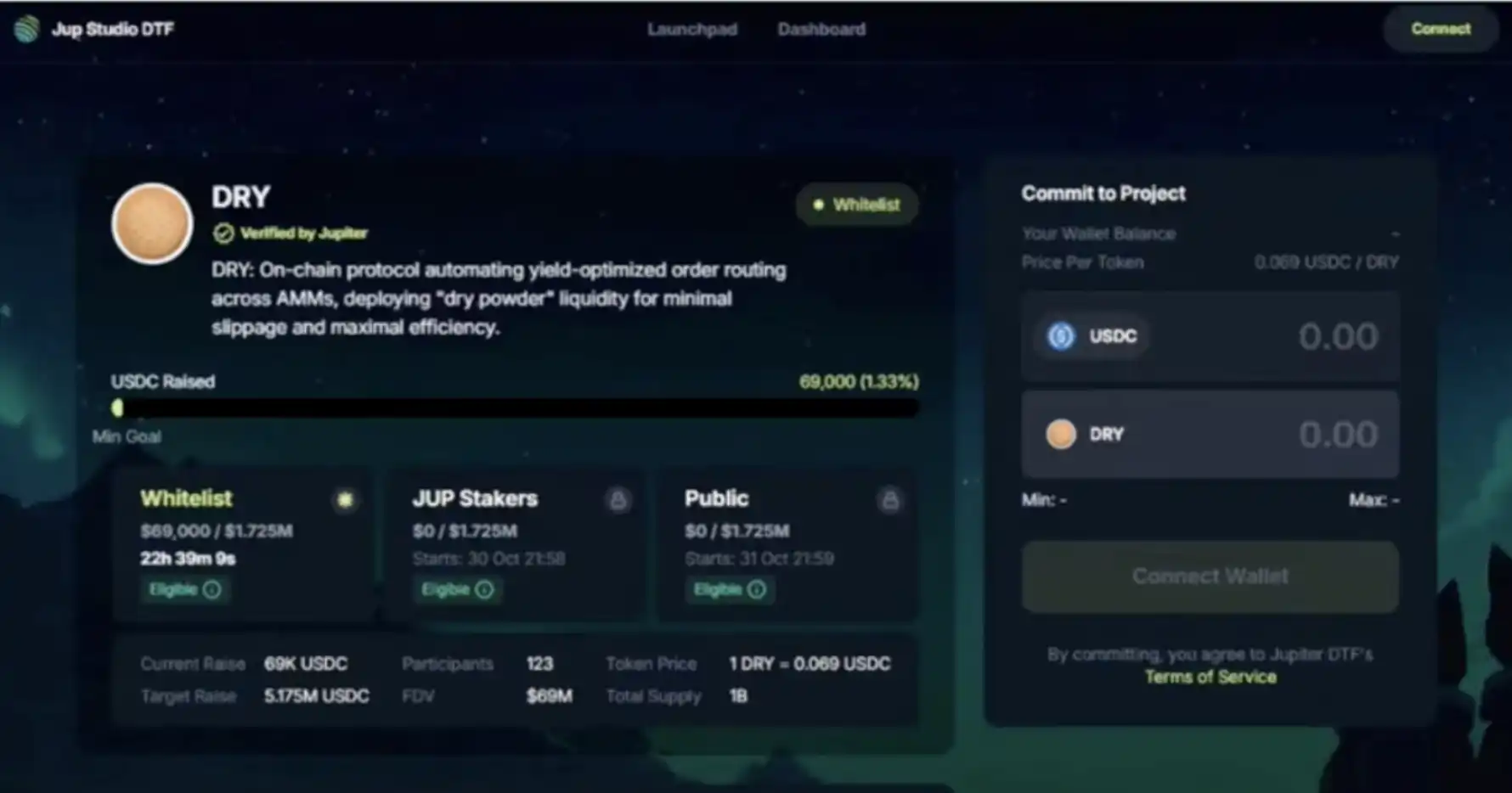
According to the demo page, the token launch is divided into three parts:
Whitelist (rules yet to be determined) guarantees a portion of the allocation
JUP stakers can receive guaranteed allocations based on their staked amount
The public allocation uses a first-come, first-served (FCFS) model. Once filled, the token immediately becomes tradable on-chain with no lock-up or waiting period

Notably, the HumidiFi team explicitly stated on Twitter that there is "no VC allocation," which is especially rare in today's market environment filled with VC presales and low circulating supply/high FDV tokens.
Prop AMM is a "winner-takes-all" track. HumidiFi has achieved its current dominance through technical prowess, but this also means that if a new competitor achieves a breakthrough in CU efficiency or oracle speed, it could quickly erode HumidiFi's market share. Clearly, the Prop AMM war has only just begun.
Disclaimer: The content of this article solely reflects the author's opinion and does not represent the platform in any capacity. This article is not intended to serve as a reference for making investment decisions.
You may also like
Making Money While Giving Away Money: A Look at the Latest Developments of These Leading Perp DEXs
The New Cycle and Old Rules of Crypto VC
The mysterious team that dominated Solana for three months is about to launch a token on Jupiter?
No marketing, no reliance on VCs—how did HumidiFi win Solana's on-chain proprietary market maker war in just 90 days?
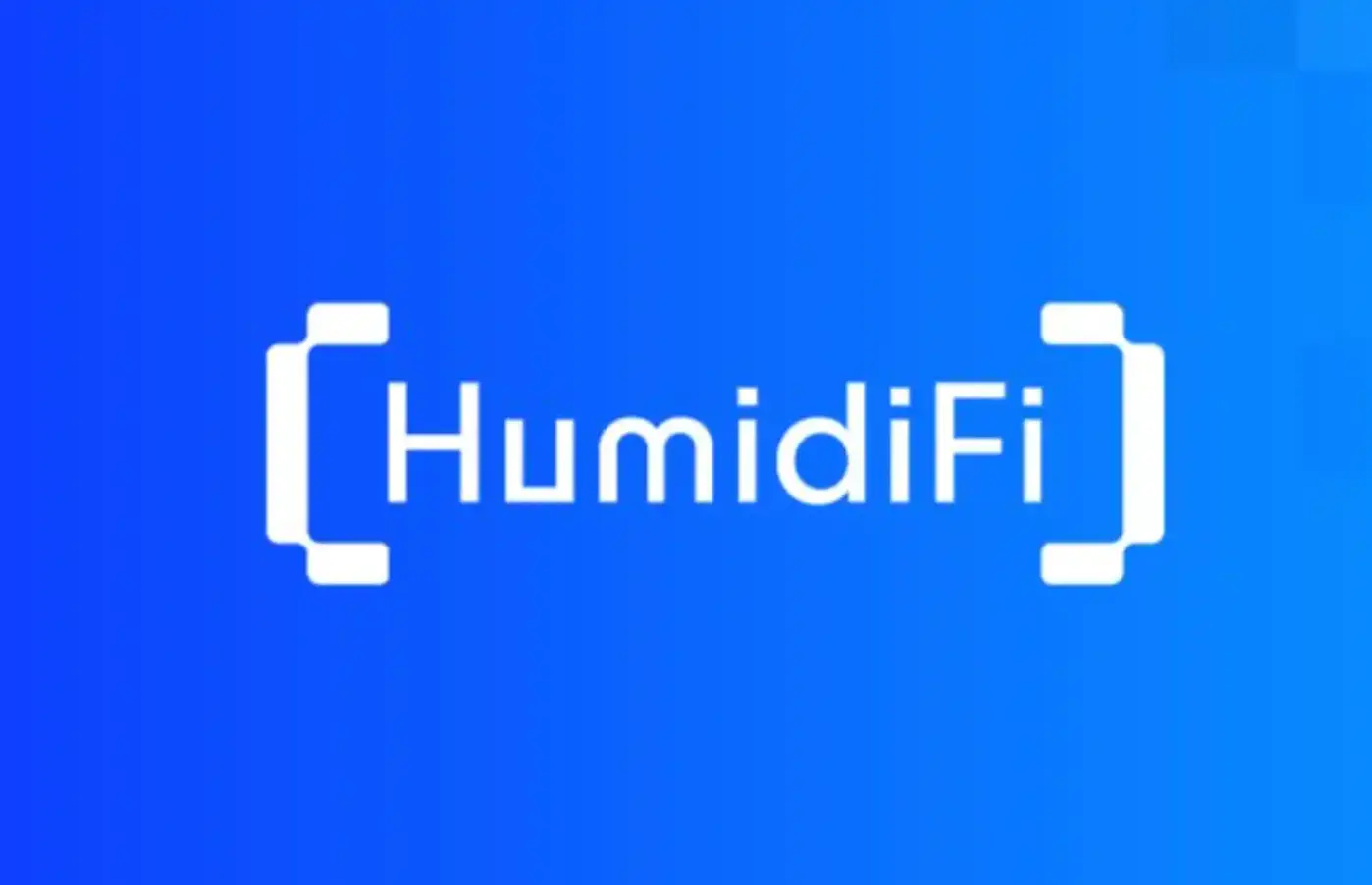

![[100% Win Rate Whale] Restarts Long Positions with Immediate Results, Market Rebounds Dramatically](https://img.bgstatic.com/multiLang/image/social/1583936301f80ac3a45561b34a1c26291761826876797.png)